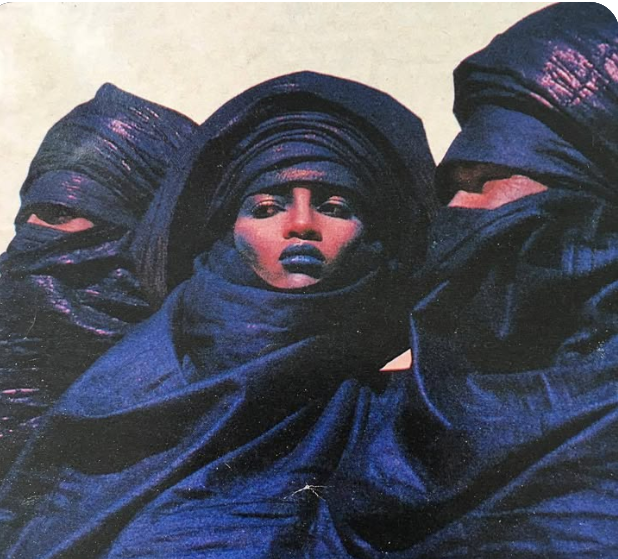Tales of the Tuareg Tagelmust Veils
Every culture has one piece (or pieces) of clothing that helps distinguish between different members, acts as a form of cultural communication, and introduces a form of ranking in society. For some tribes, it is their caps, for others, it is their dressing. For the Tuareg of the Northern Sahara, it is a veil, more commonly known as the Tagelmust veil.
The Tuareg are a tribe found in and around the Sahara Desert. They live as far north as Libya to northern Nigeria. The Tuareg speak the Tamasheq language and are officially classified as part of the Berber tribe. Living in the desert can be quite daunting, but with the Tagelmust veils, the Tuareg make a bold statement to the world that fashion can be both functional and aesthetic all at once.
The Tagelmust veil is a dark blue, indigo-dyed veil worn by both sexes of the Tuareg people. Made from either cotton or linen, the Tuareg is worn around the face and head, serving as both a turban and a face veil. Most Tagelmust wearers put on this striking piece of clothing with an amulet or ribbon that holds it in place. Both the ribbon/amulet and the turban/veil mean something when worn, especially for certain tribe members in specific positions. However, the use and type of amulet vary between regions.
How The Tuareg Tagelmust Veil Is Made
In times past, the Tagelmust fabric was placed into the indigo dye directly without water (due to desert conditions). The characteristic deep blue colour was achieved through multiple dips in the dye and a subsequent resin treatment. Finally, the cloth would be continuously hit with a wooden mallet to achieve the final shiny, consistent finish. Upon wearing the fabric, the dye would then stain the faces and hair of the Tuareg, earning them the nickname "Blue Men of the Sahara."
What The Tagelmust Veil Means to the Blue Men of the Sahara
There are many reasons why the Tuareg wear the Tagelmust. According to history, the Tuareg wear the Tagelmust because it protects their heads from the Sahara sun and common desert sandstorms simultaneously. However, in times of celebration, the longer a Tagelmust is, the more respectable the personality. In modern times, the Tuareg have been seen wearing other Tagelmust colours such as red, pink, and yellow.
The Tagelmust veil is used to distinguish between adults and young members of the same tribe. The veil is only given when a tribe member reaches the accepted age that marks adulthood. The age of adulthood among the Tuareg people is between fifteen and seventeen. Every male who reaches this age receives his first veil, accompanied by a silver amulet. The amulet doubles as a piece of jewellery and a mark of recognition and respect. For females, the veil is called the Afar or Adeko, and it is traditionally received on the day of marriage.
Every male who is given the Tagelmust veil must undergo an initiation ceremony. It is at this ceremony that the veil is officially bestowed. After this ceremony, they are expected to wear the deep-coloured veil for a week without putting it off, not even while they sleep. Legend also has it that the Tuareg never put off the Tagelmust veil unless they were with their closest family. The Tagelmust veil is expected to be worn until it can no longer be worn, after which it is replaced.
This highlights the significance of the Tagelmust veil in the culture of the Tuareg people. After wearing the Tagelmust, the male can now pray and attend Koran school.
A Final Note
So, the next time you see a man wearing a blue turban with a matching veil, you know you have met the “Blue Men of the Sahara.” Meeting them in person would surely be more effective than the story itself!


